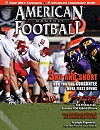Article CategoriesAFM Magazine
|
5 Keys to Running a Successful Youth Campby: Sam NicholsHead Coach - South Haven H.S. (MI) © More from this issue Thinking about the annual obligatory youth camp stirs up mixed emotions among coaches across the country. On one hand, they are excited to teach their sport to future players. On the other hand, many see this camp as just another time consuming activity taking time away from their varsity teams and their families during the summer months. Unfortunately, not all coaches take advantage of these camps as an opportunity to build their program from the ground up. Instead, these camps often become one or more of the following:
|
|
|||||||
| HOME |
MAGAZINE |
SUBSCRIBE | ONLINE COLUMNISTS | COACHING VIDEOS |
Copyright 2025, AmericanFootballMonthly.com
All Rights Reserved





